Venerables
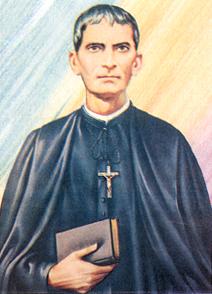
Father Agnel, as he is known, was born in the village of Anjuna to Miguel Arcanjo de Souza and Maria Sinforosa Perpetua Magalhães. His parents had nine children, eight sons and a daughter, among whom Agnelo was the sixth child. Even as a small child, all were impressed by his behaviour. From a young age he would remember sermons heard at Mass and would teach doton'n, that is the catechism, to other children, some even older than him. When he was eleven, his parents died suddenly. As his mother was dying, she entrusted her children to the care of Mary, the mother of Jesus.
With the encouragement of an older brother who was already a priest, de Souza pursued a call to the priesthood. He studied philosophy and theology at the Patriarchal Seminary at Rachol. Always in very poor health, he was allowed to live in a private dwelling off the seminary grounds, where he was able to do his studies diligently. He secured the much coveted and singular honor of acessit in his final year of study.
Souza wanted to enter a religious institute, but they had been banned in the lands under the Portuguese Crown since 1835. After much prayer and reflection, de Souza joined the Diocesan Missionary Society of St. Francis Xavier of Pilar on 17 July 1897. He was ordained on 24 September 1898, by the Archbishop of Goa and Patriarch of the East Indies, Dom António Sebastião Valente.
On 8 September 1908, de Souza became a full-fledged member of the Society. His life as a priest took him to Siroda and Sanvordem in Goa, besides Kumta, near Karwar. He was their priest, preacher, confessor and administrator.
The then Archbishop of Goa e Damão and Patriarch of the East Indies Dom Mateus de Oliveira Xavier, appointed Agnel as the Spiritual Director of the Patriarchal Seminary of Rachol on 20 May 1918. Agnel died on the feast of the Sacred Heart of Jesus, which was on 20 November in 1927. He collapsed on the pulpit towards the end of the sermon. He insisted on waiting till the Benediction of the Sacred Heart of Jesus. He died and was buried in Rachol. The parish priest who buried him roughly said these words Hanvem atanch eka Santak matiek laila, which means I have just laid a saint to rest. His remains were brought to Pilar on 10 January 1939.
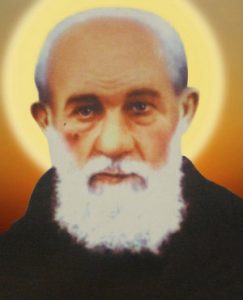 Venerable Fr. John Vincent of Jesus Mary OCD, The Spanish Carmelite missionary, Fr. John Vincent of Jesus Mary OCD evangelized Kerala for 17 years, having landed at Verapoly Archdiocese in the year 1900. After spending four years in spiritual ministries in the island of Varapuzha, he was appointed the parish priest and vicar forane of Mount Carmel Church, Chathiath during 1911-1912. Called back to Spain for higher responsibilities, he died there on February 27, 1943. Saint Pope John Paul II elevated him to the status of Servant of God and later to the status of Venerable on January 12, 1996.
Venerable Fr. John Vincent of Jesus Mary OCD, The Spanish Carmelite missionary, Fr. John Vincent of Jesus Mary OCD evangelized Kerala for 17 years, having landed at Verapoly Archdiocese in the year 1900. After spending four years in spiritual ministries in the island of Varapuzha, he was appointed the parish priest and vicar forane of Mount Carmel Church, Chathiath during 1911-1912. Called back to Spain for higher responsibilities, he died there on February 27, 1943. Saint Pope John Paul II elevated him to the status of Servant of God and later to the status of Venerable on January 12, 1996.
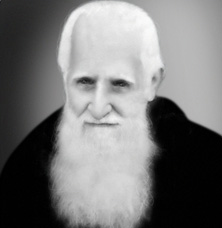 Venerable Fr. Aurelian OCD, The Spanish Carmelite missionary who lived in India for more than 50 years trained over 1,500 priests in Kerala as a theologian, professor and spiritual director. He was born at Archunduaga, Basauri near Bilbao Province in Spain. He arrived in India on October 9, 1912. Fr. Aurelian was the spiritual director (1914-44), vice rector (1934-44 and rector (1944-56) of the St. Joseph’s Pontifical Seminary, Aluva. His mortal remains are preserved at the Immaculate Conception Church, Manjummel. He died on November 16, 1963 at Aluva. He was elevated to the status of Servant of God on December 17, 1980, and that of Venerable on March 26, 1999.
Venerable Fr. Aurelian OCD, The Spanish Carmelite missionary who lived in India for more than 50 years trained over 1,500 priests in Kerala as a theologian, professor and spiritual director. He was born at Archunduaga, Basauri near Bilbao Province in Spain. He arrived in India on October 9, 1912. Fr. Aurelian was the spiritual director (1914-44), vice rector (1934-44 and rector (1944-56) of the St. Joseph’s Pontifical Seminary, Aluva. His mortal remains are preserved at the Immaculate Conception Church, Manjummel. He died on November 16, 1963 at Aluva. He was elevated to the status of Servant of God on December 17, 1980, and that of Venerable on March 26, 1999.
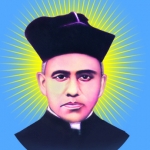 Fr.Mathew Kadalikkattil was a fervant devotee of the Sacred Heart of Jesus and a man of compassionate heart whose love for God found expression in the concern for the poor and forlorn. As a parish priest he was very much like the ' Cure De Ars' who spent long hours in the confessional and brought about changes in the lives of many sinners.
Fr.Mathew Kadalikkattil was a fervant devotee of the Sacred Heart of Jesus and a man of compassionate heart whose love for God found expression in the concern for the poor and forlorn. As a parish priest he was very much like the ' Cure De Ars' who spent long hours in the confessional and brought about changes in the lives of many sinners.
He spent time, energy and resources for the spiritual and material well-being of the sheep in his fold, caring for each and every member especially the downtrodden and the forlorn.He called himself 'Servant of the Sacred Heart' and promoted devotion to the Sacred Heart of Jesus through word,deed and exemplary life.
His heart ached seeing the sufferings of the aged, destitute, the orphaned children and the sad plight of the poor young women including widows.
Fr.Mathew sought a solution for all these problems in the Heart of Jesus. He spent long hours on his knees before the Blessed Sacrament and finally he was inspired to start a new religious congregation for women , who would care for the destitute and the orphaned . He started working for it. But he found hurdles on his path.
He kept trusting in the Divine providence. This man of prayer practiced the virtues of humility , meekness, love of God and man in a heroic manner and he became widely known as a saintly priest even when he was alive. On 27th June 2011 Pope Benedict XVI approved the heroic practice of virtues of Fr. Mathew Kadalikkattil and declared him as venerable
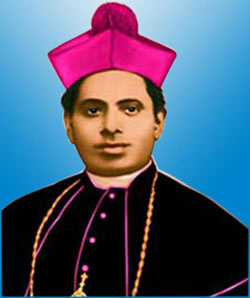 Thomas Kurialacherry, fondly called as Kunjuthomachen was born on January 14th, 1873 at Champakulam in Changanacherry, Kerala to Chackochen and Accamma. As a child, he grew up with extra ordinary goodness and piety. From his tender ages onwards Thomas had a special devotion to the Eucharistic Lord and Blessed Mother. To be a priest was his lifelong desire and he took the decision for priesthood while he was studying at Mannanam. While having his seminary education in Rome, being influenced and inspired by the Perpetual Adoration sisters who used to spend their day and night in adoration before the Blessed Sacrament, he received an inner call to make the Eucharistic Lord known, loved and adored by all, always and everywhere. During the nine years he spend at the Propaganda, he excelled in everything and in the College register it is recorded about him as the first in everything, thebeloved leader of the classmates and a zealous missionary. He had his ordination on 27 May 1899 from Cardinal Cassantha, and he offered his first Holy Mass in the chapel of Jesus that belonged to the Jesuits. On his return he pursued the inspiration to promote Eucharistic devotion in his own homeland by all means. It was mere providence that he met with Philomina Vallayil, who later came to be known as Mary Francesca de Chantal, who had a deep desire to become a nun and who shared the same charism. With her co-operation, he founded the Adoration Congregation on 8th December 1908.
Thomas Kurialacherry, fondly called as Kunjuthomachen was born on January 14th, 1873 at Champakulam in Changanacherry, Kerala to Chackochen and Accamma. As a child, he grew up with extra ordinary goodness and piety. From his tender ages onwards Thomas had a special devotion to the Eucharistic Lord and Blessed Mother. To be a priest was his lifelong desire and he took the decision for priesthood while he was studying at Mannanam. While having his seminary education in Rome, being influenced and inspired by the Perpetual Adoration sisters who used to spend their day and night in adoration before the Blessed Sacrament, he received an inner call to make the Eucharistic Lord known, loved and adored by all, always and everywhere. During the nine years he spend at the Propaganda, he excelled in everything and in the College register it is recorded about him as the first in everything, thebeloved leader of the classmates and a zealous missionary. He had his ordination on 27 May 1899 from Cardinal Cassantha, and he offered his first Holy Mass in the chapel of Jesus that belonged to the Jesuits. On his return he pursued the inspiration to promote Eucharistic devotion in his own homeland by all means. It was mere providence that he met with Philomina Vallayil, who later came to be known as Mary Francesca de Chantal, who had a deep desire to become a nun and who shared the same charism. With her co-operation, he founded the Adoration Congregation on 8th December 1908.
In 1911, Fr. Thomas Kurialacherry was elevated as the Vicar Apostolica of Changanacherry, which led to the further growth and subsequent spreading of the congregation in different Syro-Malabar dioceses of Kerala. Bishop Kurialacherry was a zealous social reformer and a person who was enthusiastically involved in bringing transformation to the marginalized sections of society. He was a faithful son of the Church. As a priest and a bishop, he was a good shepherd who cared for the sheep under his care. As a social reformer, he stood for equality, peace and justice for all. His prophetic voice resounded throughout Kerala against social evils. He brought the Dalits into the main stream of the Catholic community. A man of ecumenical vision, he worked for the unity of various Christian communities. As a man of compassion, he was a joy to those in sorrow, refuge for the afflicted and a soothing presence for the suffering. As an educator – he was a lamp to those who were moving in darkness – a man of great intellectual vigour. Being a strong advocate of education, Mar Thomas started several educational institutions including St. Berchman’s College at Changanacherry. His 113 pastoral letters bear witness to the apostolic zeal for the spiritual welfare of the people of God. Above all, he was a man of God, an ardent devotee of the Eucharistic Lord.
Mar Thomas laboured assiduously to instil devotion to the Blessed Sacrament among all the faithful by vigorously promoting “40 and 13 hours devotions” and solemn Holy Hour celebrations in the parish community. When he prepared for his ‘adlimina’ visit to Rome, he had a conviction that it would be his last journey. It was the Silver Jubilee year of his ordination and he had planned to participate in the beatification process of St. Therese of Lisieux. Before leaving, he entrusted the sisters to the Immaculate Virgin Mary and asked forgiveness to all for his shortcomings. Reaching Rome, the seminarians from Changanacherry studying at Rome, invited him for Holy Mass at Propaganda College, which he readily accepted. Though tired, he offered Mass, but fainted after that. Thus he offered his first Holy Mass and his last Mass at the same altar. He wascalled to eternal reward on June 2nd 1925. His mortal remains were brought back to Changanacherry in 1935 and interred in the Metropolitan Cathedral church. In 2014 March 25, the mortal remains were transferred to the newly built chapel called ‘Marth Mariam Kabaridapalli’ attached to the Metropolitan church. All were convinced that Bishop Kurialacherry was a saintly man. Sisters as well as people outside began to pray for him for favours. The continuous stream of pilgrims to his tomb and the graces and favours received through his intercession, gave impetus to the desire of seeing Mar Thomas raised to honours of the altar for the greater glory of God and the good of His people.
The cause of beatification was started in 1983 at Mar Thomas Kurialacherry Vikas in Changanacherry, and the diocesan process was completed in 1991. The present postulator is Rev. Msgr. Paul Pallath. The “Positio” illustrating the heroic virtues of the Servant of God was submitted to the Sacred Congregation for the cause of Saints in 1996. A team consisting of 8 Theologians and a Promoter of Faith studied it and unanimously voted in 2010 March 26 that our Founder exercised heroic virtues. The ‘Positio’ was taken for study and discussion by the Cardinals and Bishops in the ‘Congregation for Saints’. They approved this and the Pope produced the decree recognizing the virtuous life of the Servant of God, and he was exalted as ‘Venerable’ in 2011 April 2. A first class miracle further will beatify him, and again a further miracle will pave the way for him to be canonized.
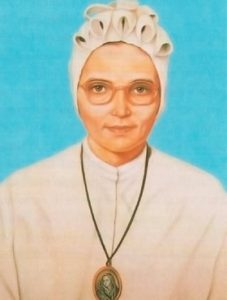 Sr. Fernanda Riva (1920–1956), was a Roman Catholic Nun of Canossian Daughter of Charitycongregation. She was born on 17 April 1920 in Monza, Italy. She came to Mumbai, India on 30 October 1939. Sr. Fernanda was Principal of the St. Joseph’s College for Women Alleppey, Kerala. She was admitted to St. Elizabeth’s Nursing Home for the Cancer treatment under the supervision of Late Dr. Arthur D’Sa. She died on 22 January 1956 in Mumbai, India. She was raised as 'Servant of God' on 13 August 1994 by His Eminence Simon Cardinal Pimenta. on 28 June 2012 she was declared 'Venerable' by Pope Benedict XVI.
Sr. Fernanda Riva (1920–1956), was a Roman Catholic Nun of Canossian Daughter of Charitycongregation. She was born on 17 April 1920 in Monza, Italy. She came to Mumbai, India on 30 October 1939. Sr. Fernanda was Principal of the St. Joseph’s College for Women Alleppey, Kerala. She was admitted to St. Elizabeth’s Nursing Home for the Cancer treatment under the supervision of Late Dr. Arthur D’Sa. She died on 22 January 1956 in Mumbai, India. She was raised as 'Servant of God' on 13 August 1994 by His Eminence Simon Cardinal Pimenta. on 28 June 2012 she was declared 'Venerable' by Pope Benedict XVI.
 Venerable Fr. Zacharias OCD, The Spanish Carmelite missionary spent 45 years in Kerala, teaching and forming the priests of Kerala at St. Joseph’s Pontifical Seminary Carmelgiri, Aluva. Fr. Zacharias came to India in 1912. He served the Church and society as a missionary, writer, social worker, bridge-builder between religions and Churches and above all as an instrument of God’s compassionate love to everyone. He was well versed in Western and Indian culture, religion and philosophy. He died on May 23, 1957 at Aluva. His mortal remains are preserved at the Immaculate Conception Church, Manjummel. He was elevated to the status of Servant of God on January 14, 1987, and that of Venerable on January 27, 2014.
Venerable Fr. Zacharias OCD, The Spanish Carmelite missionary spent 45 years in Kerala, teaching and forming the priests of Kerala at St. Joseph’s Pontifical Seminary Carmelgiri, Aluva. Fr. Zacharias came to India in 1912. He served the Church and society as a missionary, writer, social worker, bridge-builder between religions and Churches and above all as an instrument of God’s compassionate love to everyone. He was well versed in Western and Indian culture, religion and philosophy. He died on May 23, 1957 at Aluva. His mortal remains are preserved at the Immaculate Conception Church, Manjummel. He was elevated to the status of Servant of God on January 14, 1987, and that of Venerable on January 27, 2014.
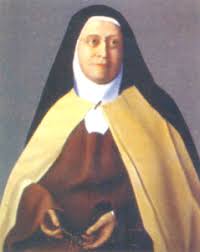 Mother Mary Veronica of the Passion, O.C.D. founded the Sisters of the Apostolic Carmel (October 1, 1823–November 11, 1906), a religious congregation of the Discalced CarmeliteThird Order for women based in India.
She was born as Sophie Leeves in 1823 in Istanbul, capital of the Ottoman Empire, to the Reverend Henry Daniel Leeves, an Anglican chaplain to the British Embassythere, and to Sophia Mary Haultain,[1] the daughter of a Colonel in the British army.
Mother Mary Veronica of the Passion, O.C.D. founded the Sisters of the Apostolic Carmel (October 1, 1823–November 11, 1906), a religious congregation of the Discalced CarmeliteThird Order for women based in India.
She was born as Sophie Leeves in 1823 in Istanbul, capital of the Ottoman Empire, to the Reverend Henry Daniel Leeves, an Anglican chaplain to the British Embassythere, and to Sophia Mary Haultain,[1] the daughter of a Colonel in the British army.
When Sophie was in her teens a change came over her. She spent long hours in prayers. She was like a child crying for the light. Her spirit craved for something that was beyond her reach. She did not know what she wanted. God had his plans for her. "Easter Tuesday ended in a dark night" she writes. "I blew out the last candles. The house was still. Suddenly a clear but soft voice broke the stillness and I heard these words distinctly 'My peace I leave you; My peace I give you'. Then all was still again, the night as well as my heart".
She felt drawn to the Catholic Church, especially the sacraments of Confession and Holy Communion. Mrs. Leeves and others were annoyed at this. But Sophie felt that God was leading her to unknown paths. She broke off the engagement she had made with Kenneth-a young and handsome naval officer.
She was received into the Catholic Church on 2 February 1850 in Malta. The following year, she went to France where she entered the Sisters of St. Joseph of the Apparition, which had been founded in 1836 by SaintEmily de Vialar. After completing the novitiate, she was professed as a member of the congregation on 14 September 1851 and received the name Sister Mary Veronica of the Passion.
In 1863 she was assigned to teach at the congregation's foundation in India, sent at the request of Bishop Marie Antony, O.C.D., who had appealed to France for assistance to hand over the education of youth to religious. As a preliminary step he had bought a house at Calicut (now Kozhikode) in 1860 and fitted it up for a convent and at the request of the people opened a school there on 1 April 1862, calling it St. Joseph's School.[2] Mother Veronica and Sr. Mary Joseph, after a long and tiring voyage and a brief halt at Mangalore, arrived there on 27 April 1862, and took charge of the school. She served as the first Superior of the convent and spent two years teaching at both Mangalore and Kozhikode.
It was there that Sister Veronica met Father Marie Ephrem of the Sacred Heart Garrelon, O.C.D. He, along with the other Discalced Carmeltite friarswho provided pastoral care for western India, had long envisioned a group of teaching Sisters to provide an education to the women and girls of the region. The friar felt that Sister Veronica was an excellent candidate to lead this effort, which coincided with her own inner call to join the Carmelite Order.
After much reflection and anguish, Sister Veronica accepted the call to start such a foundation. She left the Sisters of St. Joseph and returned to France, where she entered the Discalced Carmel of Pau as a novice. After her profession, Sister Veronica embarked on the formation of a small group of European women who had joined to start the foundation in India, living in a house in Bayonne. They officially formed the Congregation of the Sisters of the Carmelite Third Order Regular, known as the "Apostolic Carmel", on 16 July 1868, the feast of Our Lady of Mount Carmel.
A small group of three Sisters left for India, under the leadership of Mother Mary of the Angels, A.C., who served as the first Superior Generaland Mistress of novices of the new congregation. They arrived in India on 19 November 1870, about the same time as Father Ephrem was appointed as the local bishop. Shortly after their arrival, the Sisters opened the St. Ann School for Girls.
In 1873, Mother Veronica returned to her own monastery, the Carmel of Pau, where she died on 16 November 1906, at the age of 83.
On 5 September 1892, the congregation Mother Veronica helped to found became formally affiliated with the Discalced Carmelite Order. It has grown and now has branches in various parts of India, Sri Lanka, Kuwait, Pakistan, Kenya, Rome and Bahrain. The Congregation is governed under six Provinces and centrally administered by the General Team from the General Motherhouse, Bangalore, with Sr. Agatha Mary, A.C., as the present Superior General since 2008.
Mother Veronica's cause of canonization was taken up by the Sisters of the Apostolic Carmel in 1997. Mother Veronica of the Passion has been declared 'Venerable' by the Holy See in July 2014.
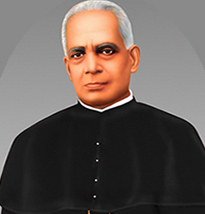 Joseph Vithayathil was a priest from India who has been declared as Venerable by the Catholic Church. He was born in Puthenpally, Trichur District of Kerala State of India to Catholic parents of the Vithayathil family on 23 July 1865. He had two brothers and two sisters.
Joseph Vithayathil was a priest from India who has been declared as Venerable by the Catholic Church. He was born in Puthenpally, Trichur District of Kerala State of India to Catholic parents of the Vithayathil family on 23 July 1865. He had two brothers and two sisters.
At the suggestion of his parish priest Fr. Zecharias, he started priestly studies and joined the seminary on 30 May 1881. He was ordained as Priest on 11 March 1894 by Bishop Mar Adolph Medlycott of Thrissur Diocese at the St. Antony's Church, Ollur with 11 others.
After being diocesan priest for a few years, in 1902 he was sent to perform exorcisms on a young mystic girl called Mariam Thresia. Here he became her Spiritual director until her death in 1926. He asked her to write her life story from early childhood, on the instructions of his Bishop. This resulted in the Autobiographical Notes of Blessed Mariam Thresia dealing with her life experiences and events up to 1905.
He helped her establish the Congregation of the Holy Family on 14 May 1914 blessed by Mar John Menachery. He was appointed as the Chaplain of this convent in 1922. After the death of the Mariam Thresia, he guided the congregation until the formation of its General Council in 1942. Under his guidance a school for teaching stitching, tailoring, weaving, knitting etc. was started in 1929 at Kuzhikkattussery.
He died on 08 June 1964 (same date on which Mariam Thresia died) and was buried at Kuzhikkattussery near the tomb of Mariam Thresia. He was declared as Servant of God on 18 May 2004 by Pope John Paul II. Mar Paul Alapatt, the current bishop of Ramanathapuram Diocese, was the Promotor of Justice for the Cause of the Servant of God Fr. Joseph Vithayathil. He was elevated to Venerable on 14 December 2015 by Pope Francis along with 16 others.
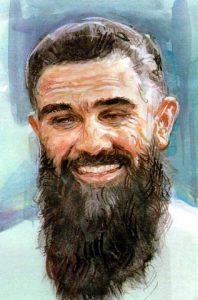 Fr. Francesco Convertini, SDB was born in the Papariello district of Locorotondo (Bari) on 29 August 1898. He was called up for military service during World War I. He was wounded, taken prisoner and taken to Poland. When he returned home he said "yes" to the Lord's call that he had discerned through the mediation of Fr Angelo Amadei and the Cagliero community in Ivrea.
Fr. Francesco Convertini, SDB was born in the Papariello district of Locorotondo (Bari) on 29 August 1898. He was called up for military service during World War I. He was wounded, taken prisoner and taken to Poland. When he returned home he said "yes" to the Lord's call that he had discerned through the mediation of Fr Angelo Amadei and the Cagliero community in Ivrea.
He set out from Genoa to India after receiving the Missionary Crucifix from the hands of Blessed Fr Philip Rinaldi. He was a novice of Venerable Stephen Ferrando and a disciple of Archbishop Louis Mathias and the Servant of God Fr Constantine Vendrame, and was distinguished for his exceptional apostolic zeal. His mission field was Bengal where he had a huge number of friends and spiritual children, both ignorant and learned, both rich and poor. He was the only missionary who could enter a house of Hindus or Muslims. He went continually from village to village, on horseback, by bicycle or better on foot with nothing but his backpack. In this way, he could meet many people and talk to them about Christ.
It gave of himself equally to all: Muslims, Hindus and Christians. He was loved by all and revered as a master of interior life with the wisdom of heart that he possessed in abundance. He was devoted to the Blessed Virgin and died on 11 February 1976 murmuring: "My Mother, I have never displeased you in all my life. Help me now!" All during life he was able to accept others and to meet people with his heart, his goodness and his humanity. This is the legacy he has handed on to us and especially to the new generations.
Fr Convertini was not a man for theory. He was very practical and was able to branch out in many directions with the values and ideals of the Gospel. He understood mercy not as a vague sentimental emotion but in the concrete practice of all the corporal and spiritual works of mercy.
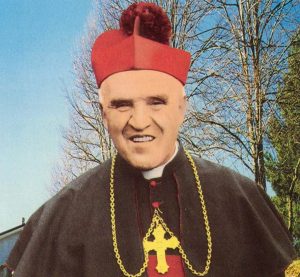 Stephen Ferrando was born on 28 September 1895 in Genoa. Ferrando was ordained to the priesthood on 18 March 1923 at the Salesian Institute of Borgo San Martino in Alessandria.
Stephen Ferrando was born on 28 September 1895 in Genoa. Ferrando was ordained to the priesthood on 18 March 1923 at the Salesian Institute of Borgo San Martino in Alessandria.
A few months later he was assigned to serve in British India as part of the third batch of missionaries dispatched. Ferrando left Venice on 2 December 1923 along with nine other companions, reaching Shillong – then the capital of the Assam province of British India and headquarters of the Prefecture Apostolic of Assam – on 23 December. There he was entrusted with the task of forming future missionary personnel for the Prefecture, serving as the Master of Novices. He also served as the catechist and then the Rector of Our Lady's House in Shillong and in 1929, became a Council Member of the Provincial team of the Salesians in the diocese. At that time, the Holy See had entrusted the Archdiocese of Madras as well as the diocese of Krishnanagar and also the Prefecture Apostolic of Assam to the Salesians.
On 9 July 1934, Ferrando was appointed as the bishop of Krishnanagar in Nadiab, the island-city in the province of Bengal; he choose Apostolus Christi ("An apostle for Christ") as his motto. He received – from the Archbishop of Calcutta – his episcopal consecration on the following 10 November. When the Prefecture of Assam was elevated as the bishopric of Shillong shortly after, Ferrando was transferred as the Bishop of Shillong as its second bishop on 26 November 1935, a position he held until 26 June 1969 when he retired (The diocese was then promoted to an archdiocese, so that his successor was an archbishop).
The new diocese was faced with many challenges, none greater than the shortage of personnel. Ferrando immediately threw himself into the work of increasing the diocesan personnel. On 18 March 1932, he wrote to the Rector Major of the Salesians: "St. Francis Xavier made that emotional appeal to the studious youth of his times. From the same wonderful land of India I renew his appeal so that many may come to work in Assam ... The harvest is rich... but the laborers are few".
At that time, missionaries were valued as facilitators for social improvement and uplift, and delegations were continually calling on Ferrando from the Asom, Khasis, Mundas, Karbis, Tiwas, Bodos, the Manipuris, Garos, Nagas and other tribes requesting that he assign priests, nuns, doctors, educationists and other personnel to their communities. In his annual report of 1945–46, Ferrando wrote: "This makes me very anxious, because if once a favorable occasion is lost, it is difficult to regain it". Missionaries such as L. Piasecki, A. Pianazzi, C. Vendrame and A. Ravalico expended themselves to conform and strengthen the Christians of the large and extensive diocese.
On 10 April 1936, the Bishop's House – formerly the residence of the Prefect Apostolic – went up in flames. Ferrando immediately began plans to build the diocese a proper Cathedral with adjacent seminary, bishop's house and a resthouse for exhausted missionaries. At the beginning of 1937, Ferrando spent several weeks visiting villages and baptized hundreds of catechumens and confirmed two hundred souls.
During World War II, the British Government ordered the internment of most of the Italian and German missionaries throughout British India. While fifty-six of his missionaries were interned or expelled, he was left with thirty priests and twenty other clerics to man the diocese. Believing it necessary to organize the local people to take up clerical positions, Ferrando founded the "Missionary Sisters of Mary, Help of Christians" (MSMHC) in 1942. In 1962, he succeeded at last in setting up the St. Paul's Minor Seminary in Shillong.
In early 1969, the Government of India declared that foreign missionaries must be recalled and replaced by locals. As a result of this, Ferrando too resigned (he submitted his resignation to Pope Paul VI) and made way for an Indian citizen to be appointed; he was appointed as the Titular Archbishop of Troyna. Ferrando retired to Italy, where he lived back in his hometown of Genoa.
Ferrando was a regular contributor of articles of missiological, cultural, anthropological, geographical and historical nature on the Assam Mission to such publications as the Bollettino Salesiano, Gioventù Missionaria and more. Ferrando died in Genoa on 21 June 1978.
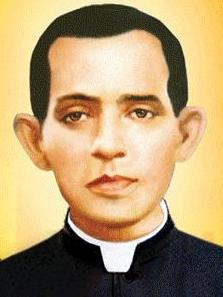 Father Varghese Payapilly, a diocesan priest who founded the Congregation of the Sisters of the Destitute in Kerala, southern India. He was born on August 8, 1876, and died of typhoid in Ernakulam on October 5, 1929, at the age of 53.
After a disastrous flood in 1924, Father Payapilly transformed his parish into a center for the homeless. The experience led him to start a religious congregation of women and name it the Sisters of the Destitute, on March 19, 1927.
The nuns today runs numerous homes for street children, abandoned elderly people, beggars, terminally ill people with cancer and AIDS, and physically and mentally disabled people. The order also has centers for work activities, hospitals, dispensaries, palliative care centers, kindergartens and schools.
Pope Francis on 14th April 2018 declared him as Venerable in the Church
Father Varghese Payapilly, a diocesan priest who founded the Congregation of the Sisters of the Destitute in Kerala, southern India. He was born on August 8, 1876, and died of typhoid in Ernakulam on October 5, 1929, at the age of 53.
After a disastrous flood in 1924, Father Payapilly transformed his parish into a center for the homeless. The experience led him to start a religious congregation of women and name it the Sisters of the Destitute, on March 19, 1927.
The nuns today runs numerous homes for street children, abandoned elderly people, beggars, terminally ill people with cancer and AIDS, and physically and mentally disabled people. The order also has centers for work activities, hospitals, dispensaries, palliative care centers, kindergartens and schools.
Pope Francis on 14th April 2018 declared him as Venerable in the Church
